1099 A measure of change
Earth 2020: An Insider’s Guide to a Rapidly Changing Planet
by Philippe D. Tortell (editor)
Cambridge, UK: Open Books Publishers, 2020
£23.95 (U.K.) / 9781783748457
Reviewed by Loys Maingon
*
 I have felt for some time that the universities are getting dangerously like the early church — James Lovelock.[1]
I have felt for some time that the universities are getting dangerously like the early church — James Lovelock.[1]
As the well-known photography of Edward Burtynsky, which is the centrepiece of these essays, has heralded, it is becoming increasingly clear to most of humanity that decades of negligence in environmental concerns have brought humankind and the planet to the critical point of an existential crisis. Notwithstanding, the aberrant denial of simple facts and reality witnessed over the past four years in Washington, which has irreversibly set back humanity’s chances of recovering from the dual implications of a climate and biodiversity emergency,[2] the inability of our intellectual and political institutions and leadership to rise to environmental challenges that were clearly set out over fifty years ago, now demands a radical re-assessment of our cultural and economic foundations. That much is clear, given that even mainstream politicians like John Kerry and institutions like the United Nations are, once again, sounding the alarm in a most recent report: Making Peace with Nature. To a large degree the challenge of the Greta Thunberg generation will be a search for post-colonial climate and environmental justice on a degraded planet.

Historians are now beginning to suggest that we have grounds to talk about a world before and after Covid-19. They suggest that we may well see the ravages of Covid-19 as a cultural tipping point in “a very dangerous epoch.”[3] To understand this one needs to be a historian, or at least have a keen sense of the arc of history out of which whatever discipline one works in has come. Science cannot operate or communicate in a cultural vacuum, because it is itself a cultural enterprise representative of a social economy. We cannot continue to work or talk from silos as in a tower of Babel. That means that our cultural and environmental history must be understood by scientists wishing to communicate science effectively. It cannot be written from a narrow simplifying perspective. It must be open and cross-cultural. Our cultural history should not be assumed or taken for granted for convenient ideological purposes. The old disciplinary isolation that served economic and ideological interests and called for the demise of the humanities has to be brought into question. We find ourselves now in a moment in which the old ideologies of liberalism, colonialism and the free market economies that underpinned disciplinary academic categories have ceased to function as intended. These ideologies have brought neither prosperity nor happiness to a majority of human beings.[4] They have not given us a common narrative, but have fragmented identities and accentuated social inequities. The old ideologies have now exhausted the natural wealth of the ecological reservoirs that made them possible, and now endanger us all in a number of ways. The virus that could no longer be contained in a globally shrinking wilderness stressed by climate change and exploited by rapacious natural resource industries for an economy of endless growth has now changed the world we took for granted pre-Covid-19.
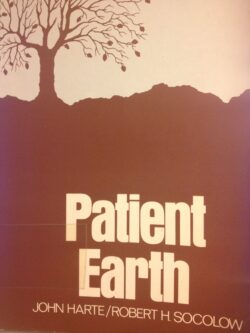
The release of Earth 2020 was intended to mark the 50th anniversary of Earth Day 2020 on what has turned out to be tragically the most under-publicized and under-attended of Earth Day celebrations. The 28 short essays which cover most of the standard environmental topics associated with the ongoing development of climate change and the collapse of biodiversity summarize mainstream environmental views. The text is modelled after John Harte’s and Robert Socolow 1970 environmental primer Patient Earth, which Harte and Socolow assess and review in a “must-read” introductory essay “Impatient Earth.” They point out that in essence their book is still relevant today. As they note of their 1970 case studies: “…. would they be relevant in (after) fifty years? All of them are.”(p.13) While that is praise for their work, it should also be taken as a well-informed condemnation of 50 years of inaction. Their essay is particularly interesting, because it reviews Earth 2020, and correctly observes some of its oversights.

Conceived before Covid-19, Earth 2020: An Insider’s Guide to a Rapidly Changing Planet is an attempt to review various environmental topics from climate change to biodiversity and pollution crises in a series of testimonies by “insiders,” specialists in their respective disciplines. It begins with a solid introduction by Philippe Tortell explaining his journey into the preparation of these essays. As he explains in the introduction the idea for this book came to him as a way “to focus public attention (if only for a short while) on topics of significant importance.”[5] Tortell explains the book as a way of assessing the human footprint on the “Earth system” since the first celebration of Earth Day in 1970. Most significantly, Tortell begins his book with a description of the journey he had to take in the preparation of this book. He had to go back and research the historical 1960’s events that led up to the first Earth Day of April 22, 1970, because they were unknown to him, as historical context seems to be to most members of his generation. For Tortell this is not a re-discovery, it is a discovery. Something got lost in the mists of time, namely, a life with a historical dimension. Like many excellent scientists of his generation his scientific education seemingly did not include any real historical dimension. We seem to live in an era in which basic culture is governed by historical amnesia. As Daniel Pauly has eloquently argued, science is taught as though the present is normal, the magnitude of deterioration and loss is overlooked by even the best-intentioned practitioners of science, because they have no historical baseline reference to provide the measure of change.[6]


That is followed by another essay by Tortell and colleagues introducing a very interesting setting of the ice core record to music, entitled “Earth Sounds.” This endeavour is reminiscent of the work of R. Murray Schafer in the 1970s who in the wake of Earth Day 1970 for ten years carried out the “World Soundscape Project” at Simon Fraser University. Strangely, Schaefer’s work goes unmentioned, in an apparent case of environmental historical amnesia, which seems symptomatic of this collection of essays. The late J. Donald Hughes, who pioneered environmental history, might wonder at the learned propensity to dismiss, opine and repeat history.[7]
The strength of Earth 2020 lies in the overview it gives of the extent to which neoliberal market economies have transformed this living planet in the twentieth century. Its weakness lies in doing so without really challenging the same ideology that has driven planetary destruction.
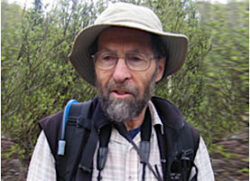
Even an apparently timely and well-informed set of excellent short essays may be at odds with the global zeitgeist, and out of step with the needs and political realities at the time of release. As presciently noted in the excellent essay by John Harte and Robert Socolow that reviews the blind spots of the generations of 1970 and 2020, both Earth 2020, and its predecessor Patient Earth “are silent about the overuse of antibiotics and uncontrollable epidemics” (p. 16). Unforeseen events like a little unknown virus can change everything, even for would-be “insiders” whose business is assumed to be assessing the future of this planet, but who nevertheless seem as unaware of the history and potential threats and impacts of pandemics, as economists were for the crash of 2008. Perhaps this is so, because we are too immersed in a comfortable economic model to appreciate the impacts of our passive participation in planetary destruction. Like Burtynsky, we don’t want to be “accusatory” (p. 116), but then, Socrates might note that not to question our participation and footprint is an unexamined life not worth living.


This is not a really optimistic book. Nor should it be. The realism laid out by climatologist Tapio Schneider in his essay “Climate 1970-2020” is exemplary. He pulls no punches and makes it clear to the reader that there will be none of the quick fixes that politicians promise, or have been promising for the past four decades. Schneider makes the case that we have shut doors and burnt bridges. We have reached a turning point from which there is now no going back. We will need to adapt. As Schneider point out, “Mitigation was the focus of 1992.” 28 years on, the mitigation bridge is burnt down. We need to confront severe changes, because “limiting global warming to 2C above industrial levels will be extremely challenging, if not impossible” (p. 29). This is a real and welcome breath of fresh air. It is rare honesty, a currency lost with historical knowledge and eradicated from politics. This is truth in an era of lies that led us all to a globalized Trumpism of re-assuring lies and alternate realities. In fact, Schneider’s realism also comes through in a scientific paper published in November that puts an end to the re-assuring geo-engineering projections that receive a mix review in the well-balanced objective essay by Douglas McMartin and Katharine Ricke in Earth 2020 (p. 93).[8]

Gone are the endless political mirages that one finds even in Elizabeth May’s “Politics and Law,” which perhaps represents the most honest and forward thinking position taken by any Canadian politician. Here too for reasons that I will argue below, with the best intentions May falls prey to the illusion that an unsustainable global economy could be rendered sustainable. The proof is always in the pudding. We have never had “sustainability,” beyond the brownwash of government and industry pronouncements and committees. The Brundtland report was not so much a reaction to the systemic problems of “environment, development and militarism,” as it was a dubious conservative status quo strategy to make an unsustainable social and economic system seem formally sustainable. It was sugarcoating to swallow neoliberal economics. It was a comfortable way in the conservative political aegis of Reaganism and Thatcherism to avoid the necessary hard shifts to a circular economy advocated by real progressives, a point obliquely referred to by Harte and Socolow. It has been, and continues to be, a misleading reaction within the ideology of classical economics based on endless growth where success is measured as GDP to continue what was known by progressive economists in 1970 to be unsustainable. May quotes Naomi Klein on the rise of corporate power and the WTO, and laments the rise of the “carbon club,” but the makings of the carbon club, which also always pretends to be sustainable, were already present in the Brundtland report. The impacts of the fossil economy have continued unabated for the past three decades, because Brundtland perpetuated the mirage of “mitigation” and “sustainability.”

Status quo and the economics of GDP were a known failure in 1970, as is now increasingly obvious together with the collapse of Reaganism. It is recognized even by mainstream reports like Making Peace with Nature to be a central part of our global failure. Proposed alternatives clearly known in 1970 were as viciously opposed as was climate change in the 1990s. The economics that drive climate change and biodiversity collapse are one and the same, and the interests to protect them are also the same. In this respect, the most important, and revealing paragraph in the entire collection of essays is the testimony of Harte and Socolow:
We have looked back at the progress on various issues raised in Patient Earth, from climate change to biodiversity, from toxics to reproductive freedom, and from warfare to economic sustainability. In each case we asked whether there was sufficient science in 1970 to know whether action in the form of public policy was needed. We concluded that, yes, the science was generally sufficient to impel such action…. But the conceptualization of, and commitment to, effective policy was woefully lacking. The imbalance is about the same today.
Effective policy was in the making before and after Earth Day 1970. It came in the form of Club of Rome conferences that started in 1968, crystallized with the official release of The Limits to Growth in 1972 and continue to this day.
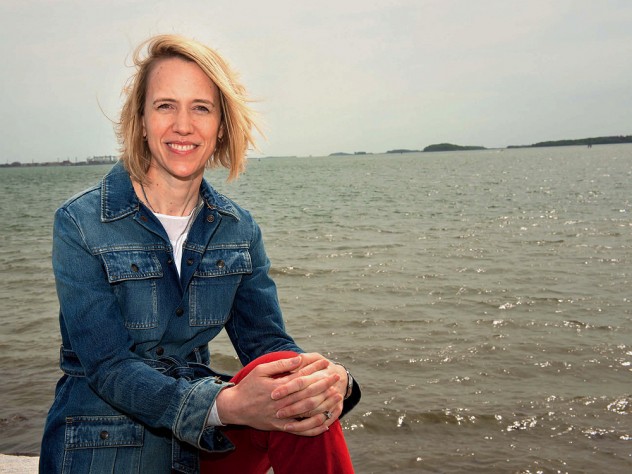
Limits to Growth and the need for a move to a circular economy once again finds important re-confirmation in the Earth 2020 essays on the ever-growing problem of unrecycled plastics by Roland Geyer, and the excellent review of toxicants, “The Global Chemical Experiment,” by Elsie Sunderland and Charlotte C. Wagner. In spite of all the Brundtland sustainability talk, globally only 9 percent of plastics have ever been recycled. Geyer makes a strong case that the problem can only be addressed if we shift to a closed loop economy, as was proposed in 1970 in Patient Earth by Herman Daly, whose arguments for zero-growth “remain unfashionable (and incomprehensible to economists)” (p. 16).

Yet, in spite of their unfashionable character, these same arguments are also found to be more necessary than ever by Sunderland and Wagner, who reference the “pioneering work” on toxicants by SFU’s Bruce Lamphear on lead-based paints. Sunderland and Wagner reference that the contamination of toxicants has been growing exponentially for the last 5 decades. The disposal and distribution of toxicants have largely been uncontrolled for the past 50 years. In their view this cannot be addressed in a free market economy. The problem of tracing and disposal require a shift to a closed loop economy, otherwise the chemical industry is simply conducting an uncontrolled experiment, with no replicates, on a planetary scale on you and me. These were shifts that were advocated 50 years ago and which could have been easily made 50 years ago.

We knew. We did nothing. So after 50 years: “How dare you?”[9] is the only proper response.
Harte and Socolow posit the foundation of 1970s environmentalism in the triad of “wilderness and the non-human environment, militarism and population.” As they pointedly note, “Notably, they are scarcely present in the collection of topics addressed in Earth 2020” (p. 14). In the light of the content and perspectives they find in the writings of the authors of Earth 2020, Harte and Socolow dismiss or downplay the relevance of the militarism and population growth to contemporary environmentalists who, in their interpretation, are only really interested to “protect the environment in largely instrumentalist terms, stressing direct benefit to humans” (p. 14). Gone is the interest in “wilderness.” This is “urban environmentalism” in which nature serves to support agriculture and drive energy needs. In other words, the environmentalism they refer to is largely anthropocentric and still blindly subservient to classical economics of endless growth. This is somewhat disconcerting, but perhaps telling about the exceedingly rarefied oxygen that characterizes the social environment of contemporary academia.
What Harte and Socolow do not include in their consideration are the profound changes that have taken place in universities over the past fifty years. While right-wing conservatives love to tout universities as bastions of the radical left, and the so-called university radical left obliges by keeping busy figuring out its gender pronouns, the reality is that rise of universities’ dependency on corporate funding and the central position of corporate business schools within modern universities has repressed, if not erased, actual progressive thinking in universities. What remains today of 1970s hard questioning of status quo in universities is a cosmetic veneer of progressive thinking adapted to the needs of a “professionalized” neoliberal economy. Were this not the case, status quo would not have prevailed for the last five decades. The handicap of being an insider is that one is part of that system, as Robert E. Kopp’s essay, “Sea level Rise, 1970-2070: A View from the Future,” demonstrates. In an otherwise technically correct presentation of the implications of sea-level rise from 1970 onwards and what the modelling suggests, Kopp points out that federal and state governments have lost public trust. He suggests that universities will retain public trust: “Often public universities — generally more highly trusted than federal or state government…. play critical roles as both conveners and as sources of expert knowledge” (p. 148). Perhaps fortunately, Kopp’s essay is written as a futuristic fantasy. The universities’ corporate bargain has already compromised academic independence, and public trust, and is a threat to their future.

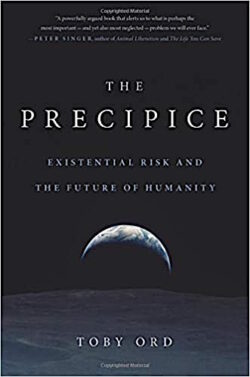
It also seems that Harte and Socolow overlook some key points. On January 27 2021, The Bulletin of Atomic Scientists noted that the Doomsday clock had moved to the last 100 seconds, the shortest it has been since 1947. To quote The Bulletin, “Nuclear nations, however, have ignored or undermined practical and available diplomatic and security tools for managing nuclear risks. By our estimation, the potential for the world to stumble into nuclear war—an ever-present danger over the last 75 years — increased in 2020.”[10] The fact is, militarism remains a key environmental concern, even if it is poorly articulated in corporate university circles. The problem is that instead of being diminished over the past 50 years, as we had every right to expect, militarism has so gained in prominence in our daily lives that we have become dulled by its increased ever-presence and the risks it poses as it increasingly influences seats of power and threatens democratic values essential to environmental protection. As we saw, Trump began his reign, like all decadent Roman emperors, surrounded by a triumvirate of generals. Even Biden has begun his term with a controversial military appointment in defence that contravenes a 1947 law intended to keep the military strictly under civilian control.[11] The peace movement has not disappeared, nor has its “raison d’etre.” As is self-evident in Toby Ord’s recent publication The Precipice, existential risk assessment has now become a standard university discipline simply because the world has become an increasingly unstable and dangerous place.[12] The growing problem of militarism and the environmental and existential risks it has posed since 1945 have not gone away. It has merely morphed and become so ingrained into our daily lives, in ways that were unimaginable in 1970, that we now tacitly accept military presence, and privilege, in civilian spheres.
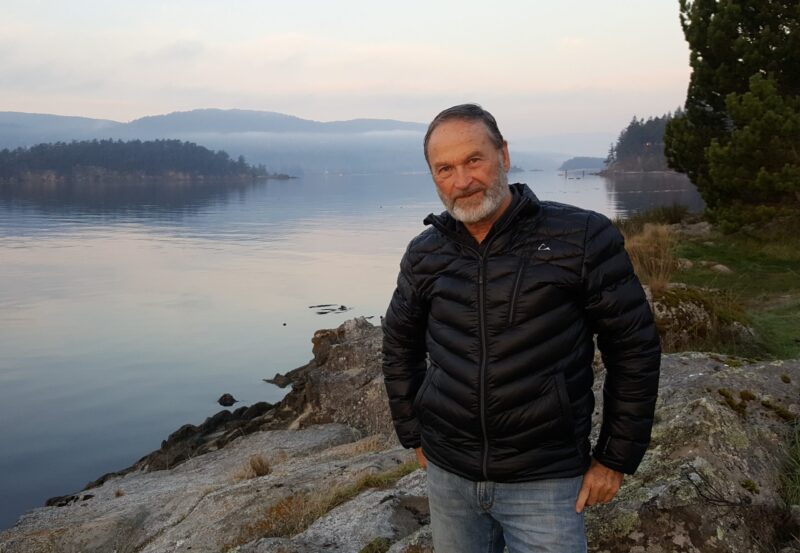

Given UBC’s international reputation for the work of William Rees and Mathis Wackernagel on the Global Footprint Network, it is difficult not to note the absence of a contribution by Rees in Earth 2020. The perspective that population is no longer an environmental concern is similarly disconcerting: “Today environment has distanced itself from “population” in most discourse” (p. 15). Last month saw the release of at least two major internationally-recognized reports, following up on the release of the United Nations’ Global Biodiversity Outlook 5.[13] Making Peace with Nature is all about the unsustainable pressures that a growing population is putting on this planet. The Economics of Biodiversity: The Dasgupta Review, and the Corey Bradshaw report, “Underestimating the Challenges of Avoiding a Ghastly Future” (2021), like the many that have preceded them over the past 50 years, put the impacts of population growth and the economic human drive for prosperity squarely at the centre of contemporary environmental discourse.[14]
It is difficult to avoid the facts. Human population has grown from 1.3 billion at the beginning of the twentieth century to 7.8 billion today, and is expected to grow to 9.6 billion by 2050.[15] During that time CO2 emissions have grown 12-fold. Based on the 2020 WWF Living Planet Report wild animal populations have dwindled 68 percent since 1970. If we consider the biomass changes that this represents, humans account for about 36 percent of the biomass of all mammals on this planet. Humans and their agricultural animals make up 96 percent of vertebrate biomass on this planet. Wildlife accounts for only 4 percent. Domesticated livestock, mostly cows and pigs, account for 60 percent, and wild mammals for only 4 percent.[16] Today there are 3 times more agricultural fowl than wild birds.[17] Agriculture accounts for 80 percent of deforestation to meet the human needs of an exponentially growing population. Human activity and numbers have transformed this planet to the point that we endanger our own survival. There is no escaping the simple fact that expansion of the human footprint through deforestation increases CO2 output, decreases CO2 capture and diminishes biodiversity. And, that same deforestation has unleashed the current pandemic, the worst since the Spanish flu of 1918. These losses and the rate of deforestation and what it means for pollution, climate change and biodiversity are well covered by Sally Aitken in her tersely entitled essay “Forests” which remarks on the rate of deforestation in BC and what it implies for the future.

This is not just a matter of wealth, or wealth distribution, however important that is. It is primarily a question of human numbers, economic expectations and resources needed to sustain basic life, the quality of life aspired to by those numbers, and the demands that that places in a shrinking world made less inhabitable by climate change and the consequent loss of ecological services. While the question of human population numbers is, without any doubt, one of the greatest ethical challenges of our times, it is not one that we should avoid because it poses ethical problems.
The ethical implication that is omnipresent in population discussions is “environmental justice.” It is impossible to deal with one without dealing with the other. To avoid confronting the reality of population growth, and what Vandana Shiva first identified as “maldistribution,” does not get one off the hook. As Harte and Socolow note, again correctly, “Patient Earth did not have a single essay on environmental justice, and, fifty years later, neither does Earth 2020” (p. 17). In fact, the 1970 case studies included an essay by H. Lyle Stoots, an inner city emergency room doctor who dealt with urban inequities. The inequities of environmental impacts, as with Covid-19, or problems of water quality such as the 2014 Flint water crisis, disproportionately affect vulnerable communities economically and socially. The management of these inequities has laid bare the systemic racism of our institutions.

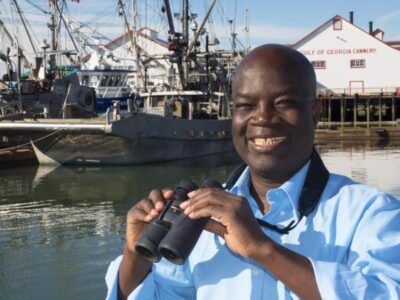
Harte and Socolow are therefore right to note that it is disconcerting to consider that in 2020 a collection of essays by “insiders” remains seemingly oblivious to environmental justice. While no single essay is dedicated to the topic of social justice, it would be unjust to suggest that this theme is entirely absent. The excellent essay “Land,” by Navin Ramankutty and Rashid Sumaila, reviews the failures of the “Green Revolution” the global industrialization of food production that has increased production at the expense of agro-biodiversity. They point out the glaring contradictions of agricultural policies and practices that drive deforestation and use 70 percent of freshwater, with poor social returns. Sixty years of industrial agriculture have increased calorie production by 30 percent, but have failed to distribute the benefits equitably, creating a world in which 820 million people remain malnourished, and “2 billion suffer from micronutrient deficiencies” (p. 198).

The question of environmental justice is also partially addressed in Earth 2020 by an update of perspectives on aboriginal justice. It is addressed in two essays, first by Deborah McGregor in “Mother Earth,” and then in the closing collaborative essay by Zoe-Craig-Sparrow and Grace Nosek, “Saving the Boat. “Mother Earth” reviews the importance of the gains made by First Nations towards the recognition of UNDRIP and the re-valuation of our understanding of the planet as a living organism. Therefore, McGregor rightly promotes the values of “planetary justice.” It is unfortunate that the review pitches the values of First Nations culture against a construction of Western Culture as uniformly industrial and racist. Without wishing to downplay or deny the injustice and historical wrongs of the British colonial system that prevailed from 1865 to 1970, it is misleading to over-generalize. That overlooks the folk cultures of Europe, from which friends of First Nations, like BC’s own James Teit came and on which he drew, and the entire scientific tradition of Alexander von Humboldt, which fostered abolitionism and supported the concept of the planet as a living organism, but which was largely repressed between 1914 and 1970. Fortunately, a reconciliation of these cultural threads emerges in the closing essay by Craig-Sparrow and Nosek, which draws together the challenges that the planet’s predicament poses for a new generation of youth from First Nations and colonial cultures.


Aptly, the plight of future generations is well presented by Craig-Sparrow and Nosek as being at sea in a rudderless boat, but anchored by culture and tradition. The state of the ocean that this generation of Canadians inherits is summarized in two excellent essays. And it is not enviable. The first essay, “Oceans,” by David M. Karl from the University of Hawaii, describes the problems posed by the growing acidification of the oceans and the expanding desertification of large swaths of the ocean, and the consequent collapse in productivity. Notwithstanding the material and economic implications for future generations, Karl rightly concludes that what is needed is a most unacademic approach: “Basic science is critical, but so too is fact-based education, aggressive advocacy for our planet and effective action” (p. 210). That is re-enforced in an essay entitled “Fish” by the analysis of the state of fisheries reported by Rashid Sumaila and Daniel Pauly, who appropriately begin with a historical review of global sustainable fisheries and their collapse with the industrialization of fisheries as of 1880. They trace the impacts of under-reporting and technological over-exploitation that have resulted in the collapse of entire ecosystems, the disappearance of once abundant species, like the Canadian northern cod, until peak fisheries were reached in 1996. They then describe the consequences of a continuous collapse that has followed ever since and that has only been met with official inaction and complacency. And they too like Karl, note the urgent need to demand and take action:

Unless things change, largely uncontrolled industrial fishing is likely to continue to the bitter end — whatever that may be. Add marine pollution to this (including plastic) and multiple ocean stressors, generated by climate change (sea surface temperature rise, ocean acidification and deoxygenation), and the future might look rather bleak. We desperately hope that the world takes suitable action on multiple fronts to chart a different path forward. (p. 183).
This is a matter of what we want to hand to future generations. Earth 2020 lays out the situation we face, but it is short on solutions.
To chart that necessarily different path it might help to recall some historical markers. Fifty-five years ago, in 1965, in an almost forgotten time when truth and facts also seemed elusive when we were told that a war was not a war but a conflict, U.S. President Johnson received an enduring bombshell truth that has out-endured all the Vietnam lies. It was a public scientific report that initiated formal concern over “climate change” in the arena of scientific and public discourse.[18] In some ways Vietnam has faded away, but climate change has continued to metastasize to a point that it is now officially, at least in most quarters, acknowledged that it is an existential threat to human civilization and to the planet.

As others have noted, in re-reading that report today, one is struck by how well today’s environmental problems were understood six decades ago. Both early climate modelling in 1974 by a contributor to President Johnson’s 1965 report, Wallace Boekner,[19] and the socio-economic modelling of the 1972 Limits to Growth, that came out of the environmental concerns expressed in the presidential report, have withstood the test of time. Similarly, repeated analyses comparing the economic record from 1970 to 2020 has fully vindicated the environmental, social and economic projections of the scenarios presented in Limits to Growth. Following Graham Turner’s 2008 landmark report A Comparison of “Limits to Growth” with Thirty Years of Reality, a growing number of studies have demonstrated the rigour of the Limits to Growth’s “do nothing” scenario.[20] In spite of much fanfare and smoking mirrors, the economic trajectory followed by this planet’s politicians and mainstream economists over the past 50 years, has been “do nothing.” Contrary to the many claims of “sustainability” and “change, ” nothing really changed and everything has substantially deteriorated. Wilderness has shrunk massively. Apparently this may not be a topic worthy of discussion, because we need to deal first with the material needs of humans for which nature always pays.
As any reader who cares to check the 2015 graph in Dana Nuticelli’s article referred to below can confirm, Boecker’s simple modelling generally anticipated Michael Mann’s infamously controversial “hockey stick graph” by 24 years. The question that immediately comes to mind is why Boecker’s 1974 graph did not raise the ire that Mann’s graph raised in 1996? As with most common concerns that challenged the viability of the expectations built into the North American dream of endless consumption in an economy of endless growth, both Boecker’s model and Limit to Growth’s scenarios were met with 50 years of US labour activist Nicholas Klein’s axiom.[21] As Jorgen Randers has noted both climate change and the Limits to Growth were attacked and reviled by the same people and the same set of neoliberal interests.[22] These interests are coincidentally the same set of interests that run our universities today. Institutions funded by corporations, run by boards of corporate directors and informed by business schools that promote neoliberal economics, may be forced to identify problems but are ill-equipped to provide solutions. The solutions lie in recovering the culture and ecosystems that 50 years of neoliberal economics have destroyed.
*

A graduate of the universities of St. Andrews, UBC, and Saskatchewan, Dr. Loys Maingon first taught environmental studies in 1986. An avid naturalist and a registered professional biologist, he is past president of the Comox Valley Naturalists and current webinar host for the Canadian Society of Environmental Biologists. From his home on the Tsolum River near Merville, he owns and operates an endangered plant nursery and oversees a number of regional conservation and heritage programmes. He is also Research Director of the Strathcona Wilderness Institute and does environmental consulting. Arrested at Clayoquot Sound in 1993, Loys remains a strong advocate for social, economic, and environmental change. He contributed a chapter to Clayoquot & Dissent (Ronsdale Press: 1994). Editor’s note: For The Ormsby Review, Loys Maingon has reviewed books by Daniel Pauly, Collin Varner, Peter Wohlleben (The Secret Wisdom of Nature and The Hidden Life of Trees), Paula Wild, and Richard & Sydney Cannings.
*
The Ormsby Review. More Books. More Reviews. More Often.
Publisher and Editor: Richard Mackie
The Ormsby Review is a journal service for in-depth coverage of B.C. books and authors. The Advisory Board consists of Jean Barman, Wade Davis, Robin Fisher, Cole Harris, Hugh Johnston, Patricia Roy, David Stouck, Maria Tippett, and Graeme Wynn. Scholarly Patron: SFU Graduate Liberal Studies. Honorary Patron: Yosef Wosk. Provincial Government Patron since September 2018: Creative BC
“Only connect.” – E.M. Forster
*
Endnotes:
[1] https://www.theguardian.com/environment/2020/jul/18/james-lovelock-the-biosphere-and-i-are-both-in-the-last-1-per-cent-of-our-lives
[2] https://www.nytimes.com/2020/11/09/climate/trump-legacy-climate-change.html; https://www.nationalgeographic.com/environment/2020/12/most-consequential-impact-of-trumps-climate-policies-wasted-time/
[3] https://www.theguardian.com/world/2021/feb/13/a-very-dangerous-epoch-historians-try-make-sense-covid
[4] https://www.nytimes.com/2021/02/13/opinion/race-economy-inequality-civil-rights.html
[5] page 2
[6] Daniel Pauly,(2019) “The Vanishing Baseline Syndrome,” in Vanishing Fish. 94-108.
[7] https://www.researchgate.net/profile/J-Donald-Hughes
[8] Tapio Schneider, Colleen Kaul and Kyle Pressel (2020) “Solar geoengineering may not prevent strong warming from direct effects of CO2 on stratocumulus cloud cover.” PNAS. https://www.pnas.org/content/117/48/30179
[9] https://www.youtube.com/watch?v=TMrtLsQbaok
[10] https://thebulletin.org/doomsday-clock/current-time/
[11] https://www.nytimes.com/2020/12/10/opinion/biden-austin-defense-secretary.html
[12] Toby Ord (2020). The Precipice: Existential Risk and the Future of Humanity. New York Hachette
[13] https://www.cbd.int/gbo5/background
[14] https://www.gov.uk/government/publications/final-report-the-economics-of-biodiversity-the-dasgupta-review ; https://www.frontiersin.org/articles/10.3389/fcosc.2020.615419/full
[15] https://www.scientificamerican.com/article/human-population-growth-creeps-back-up/
[16] https://www.pnas.org/content/115/25/6506
[17] https://www.cbsnews.com/news/endangered-species-animal-population-decline-world-wildlife-fund-new-report/
[18] https://www.theguardian.com/environment/climate-consensus-97-per-cent/2015/nov/05/scientists-warned-the-president-about-global-warming-50-years-ago-today
[19] https://blogs.ei.columbia.edu/files/2009/10/broeckerglobalwarming75.pdf
[20] https://jancovici.com/wp-content/uploads/2016/04/Turner_Meadows_vs_historical_data.pdf ; For a list and discussion of works that have vindicated LtG since 2000 see Jorgen Randers (2012) A Global Forecast of the Next Forty Years. Chelses Green, 307.
[21] “First they ignore you. Then they ridicule you. Then they attack you and want to burn you. And then they build monuments to you.”
[22] Jorgen Randers (2012) 2052: A Forecast for the Next Forty Years. 307.
5 comments on “1099 A measure of change”
A very impressive and wide-ranging review that makes excellent use of the template of 1970 as a counterpoint to the 2020 collection. I share the reviewer’s concerns about the increasingly corporate turn in university funding and the relative decline of critical thinking on broader themes of environmental and social justice. Still, there are enough critical voices in the collection under review to suggest that all is not lost in this regard. And dire as the human footprint on our planet has become, there is modest hope that the growing environmental consciousness among the young in particular may begin to bear fruit as the detrimental effects of climate change come home.